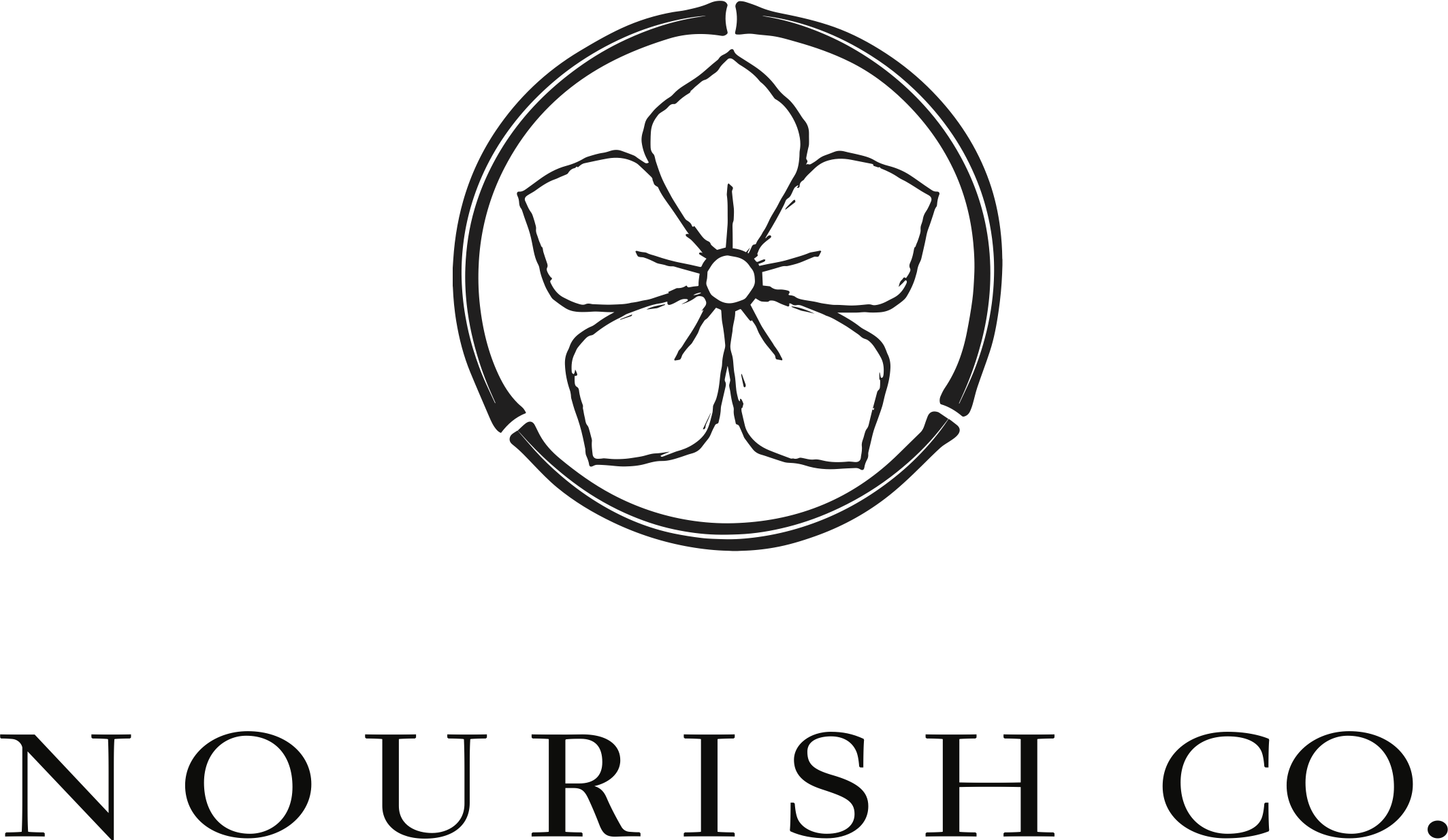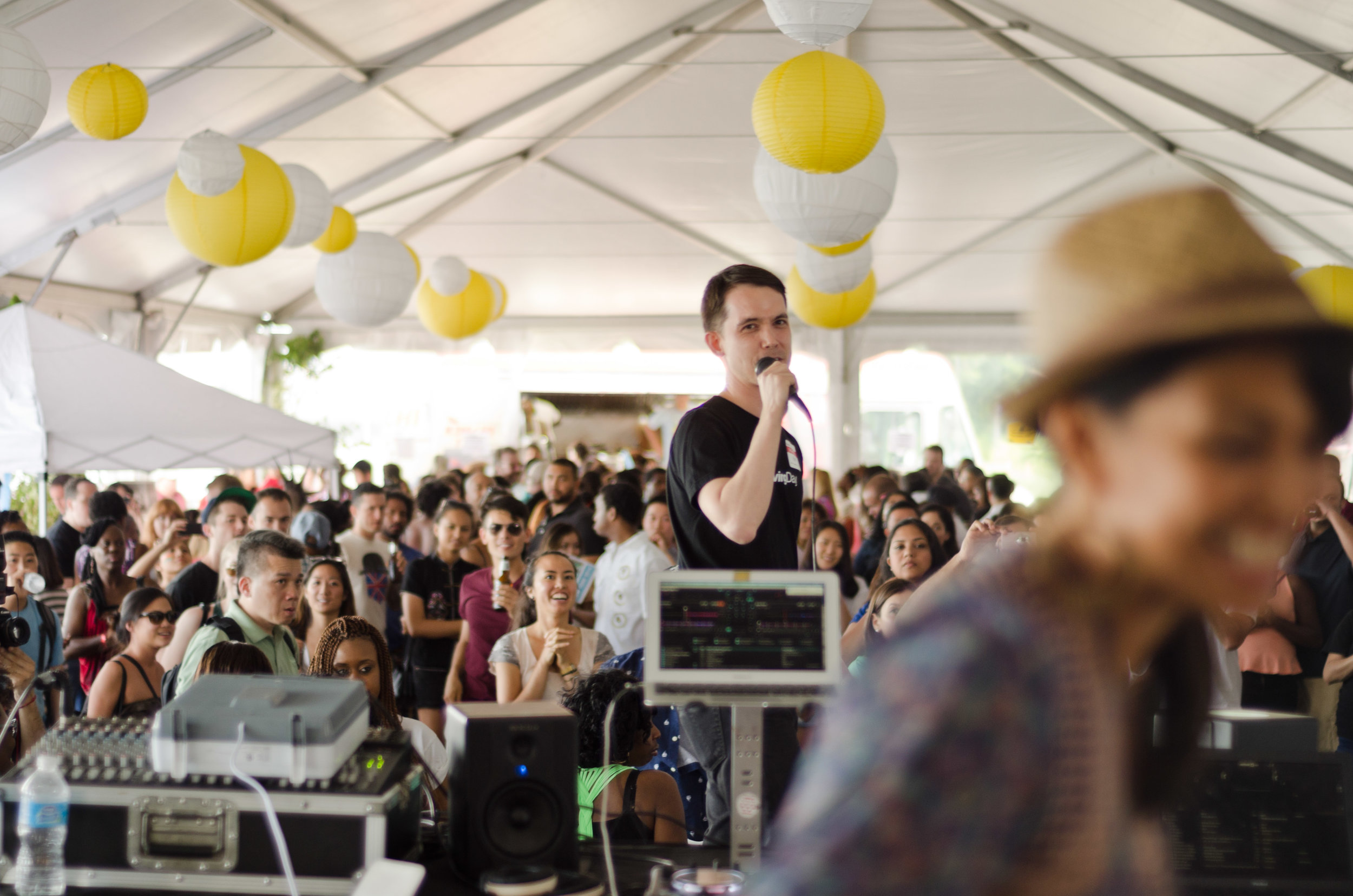An Interview with Ken Tanabe, the Founder of LovingDay.org
Black and white sesame cookies I made in honor of Loving Day!
When I married someone who is not Japanese American, it was never a topic of conversation with either of our families. Bryan and I had both grown up in California in somewhat diverse and largely Asian American communities. While we are blessed to have exceptionally accepting parents, we also came of age during a time when people didn’t know how to talk about race. That’s why I was so struck when I learned about Loving Day and the landmark Loving v. Virginia case. It wasn’t that long ago when simply being married to each other could have landed us in jail. There are still some parts of the country and the world where our marriage and future children would be looked down upon.
There was something else, too. Even though no one seemed to be talking about multiethnic relationships, I wanted to. I want our future children to be proud of and feel connected to their identities as Japanese American, Jewish, and mixed race. I also want to equip them with the language to express who they are, and give them access to a community of likeminded people, especially since so many of my mixed friends have expressed to me that they felt alone growing up. That starts with us, and that’s why I am so grateful that Loving Day exists.
This Wednesday, Bryan and I will be hosting our very first Loving Day gathering. We’ve invited a few friends to join us for dinner at our favorite Mexican restaurant in the city (El Buen Comer!) for a meal. I’ll be printing some facts from the Loving Day kit to place on the table, and we will use the speech template that’s part of the kit. I’ll also be handing out these heart-shaped black and white sesame cookies as a takeaway. I recently had the opportunity to interview Ken Tanabe, the founder of LovingDay.org, on the nuances of ethnicity, ideas of how to celebrate Loving Day, and examples of gatherings around the globe!
*Photo of founder Ken Tanabe at a Loving Day celebration by Willie Davis
On his background and starting Loving Day…
My Dad is from Japan and my Mom is from Belgium, so they’re a pretty rare combination. I didn’t meet another Belgian Japanese person in the U.S. until I was around 30 years old.
I’ve always felt there was an opportunity to explore that part of my identity and community. When I discovered the Loving decision, Loving v. Virginia, the landmark Supreme Court case in 1967 that struck down all laws against interracial marriage, it really opened my eyes. It was front page news for my parents’ generation. They were familiar with it, but for my generation and younger, it is not really part of the conversation of civil rights and it really should be.
When I got to graduate school, I thought this would make the perfect subject for my thesis project. Through that process, I came up with the concept for Loving Day. The name and the idea that anyone can celebrate the anniversary of Loving v. Virginia on June 12th is a way to educate people about the history of the case. Loving Day is not just about learning about the laws that were in place against interracial couples and multiethnic relationships, it is also a way to build community. There are not many traditions for those of us who are outside of the traditional lines of nationality or culture, or who have multiple parts of our identity and feel that it is an important part of our experience.
On the first Loving Day…
The first Loving Day I hosted was in 2004 in New York City. We just chose a bar and asked people to come; that was it. We had some DJ’s playing music, and myself and some other folks from the community got on the mic and said a few words. It was really easy to pull together and 100 people showed up, which was a wonderful surprise. This year will be our 16th event, and it’s a bit bigger now. What’s really uplifting is that people all over the world are hosting their first Loving Day celebrations of any size, like for the neighbors, their own partner, their community, offices, schools, wherever. It’s really flexible and is designed to be as easy as possible for people to participate and to keep the tradition growing.
“Loving Day is about creating a new tradition for a diverse and vibrant community.”
*Richard and Mildred Loving at their home in Central Point, Va., with their children, from left, Peggy, Donald and Sidney, in 1967 via Associated Press
On the nuances of ethnicity…
When I started the project, the main driving factor was coming up with a framework for talking about multiethnic identity within individuals and in relationships. For example, we celebrate Black History Month in the US every year. We have a holiday for Dr. King, and we learn about the Rosa Parks story, or the sit-ins at lunch counters. While we have a long way to go, we talk about race and civil rights in the United States but we don’t have a framework yet to talk about multiethnic identities, and the nuance of ethnicity. Talking about Loving v. Virginia isn’t just an educational tool. It can start discussions about how the intersection of race and identity goes beyond just a law and into hearts, minds, families, and communities to foster acceptance. At first I thought Loving Day was about education. I felt everyone needed to know that there is a history here. Then I realized that there also needs to be a shared language and vocabulary about how to talk about multiethnic identities and the nuance of ethnicity. Like with the Dr. King holiday, people have a yearly chance (at least!) to talk with their kids and friends about everyone’s diverse identity and many nuances.
After the project launched, I realized the value of the community aspect. I’ve seen tears, I’ve seen jaws drop, I’ve seen the lights go on in people’s expressions and I count myself within those people.
“Sometimes people walk into a Loving Day event, and they are shocked; they realize for the first time that they have never walked into a room where their experience was the majority experience. Ever.”
*Photo of Richard and Mildred Loving on their couch in Virginia, taken in 1965 by Grey Villet for TIME Magazine
As I was trying to develop Loving Day, I found these spaces and realized that I myself never had this experience before. This creates opportunities to share, which is educational as well. If this is not being taught in school, how are we going to enrich the conversation about race and identity in the U.S. and in the world? I believe that perhaps it’s through our own traditions, including Loving Day, which was designed specifically for this.
On Loving Day around world…
I have to say that Loving Day has really been a butterfly effect. I was simply in a place to start the conversation, and it resonated with a lot of people. Since 2004, thousands of people around the world have helped grow Loving Day. The hashtag #lovingday has trended number three in the United States: That is something that takes a lot of people to participate in! There have been Loving Day celebrations in cities around the world. People have gotten married on Loving Day intentionally, because there’s a special meaning for them. Students often celebrate Loving Day early since June 12th doesn’t always align with the academic schedule. There have been religious services that mention Loving Day. I think the idea of being inclusive and treating everyone equitably goes far beyond any single community, faith, or culture. So many fantastic ideas have come out of the community.
“There are ways to celebrate Loving Day that are as diverse as the community itself.”
On unique Loving Day celebrations…
The weddings often top my list. On LovingDay.org, there are plenty of stories and examples that folks have shared. On their wedding day (Loving Day), one couple placed cards at each of their table settings. When the guests sat down they learned the significance of the day, which I thought was really powerful.
There is a guy named Jason Davis in Denver, Colorado who did the Denver Triathlon in honor of Loving Day. There is a group in Japan that actually went canoeing down a river to celebrate Loving Day. I’ve also heard that there was a two-for-one special on yoga classes for couples in Shanghai for Loving Day. There has been a massive amount of creativity from the community!
*Photo of founder Ken Tanabe at a Loving Day celebration by Shawna Enyart
On celebrating Loving Day through food…
Often people may be part of a particular culture, but they might not be proficient in the language or are a few generations removed. However, food can be a powerful aspect of culture that is passed down. Potluck meals are really popular on Loving Day. It is often during a meal that you really get to see different cultures coming together (quite literally) on the table. We have video on our YouTube and Vimeo channels called, “How to Celebrate Loving Day at Home”. It captured a Loving Day potluck celebration in Brooklyn, during which people brought dishes from all over the world.
“Food is such a big part of our identities, it’s part of how we feel comfortable, how we grew up with our families. ”
On how to support Loving Day…
Loving Day is completely driven by the community; by volunteers and by donations. If you would like to support Loving Day’s core team to continue the LovingDay.org website and to help us continue to spread the word and grow this tradition, donations of any size are absolutely welcome and appreciated. Multiethnic couples, individuals, even people who simply feel passionately about equality, can share the hashtag #lovingday anytime but especially on Loving Day (June 12), and share why Loving Day is important to them.
On the future of Loving Day…
The vision is that Loving Day is a sustainable and open tradition, shared between diverse, multiethnic families and people who come from those families and the communities around them. Loving Day is a way to (at least once a year) have a conversation about the nuanced aspects about identity, ethnicity, and culture. It is celebrated with friends and family, and passed down from generation to generation so children grow up celebrating Loving Day in their own homes. My hope is that Loving Day becomes something of common knowledge. In that way, we’ll not only move the needle and modernize the understanding identity, but also to create something that acknowledges the past while making the future better for all of us.
Quotes from the Loving Day community…
“Loving Day stands for the sacrifice of an amazing family that fought to secure, not only their own future, but the future of all interracial, interethnic couples in the United States.”
“On the list of people important to me, the people who top the list are my family, friends, and Mildred and Richard Loving. Not only are they inspirational in leading their fight for their right to marry somebody they loved, but they gave my parents the right to marry each other.”
“Scott and I are long time admirers of the Lovings and we live in Virginia. So when it was time for us to pick a wedding date, June 12th (2015) was the only possible option for us!”






